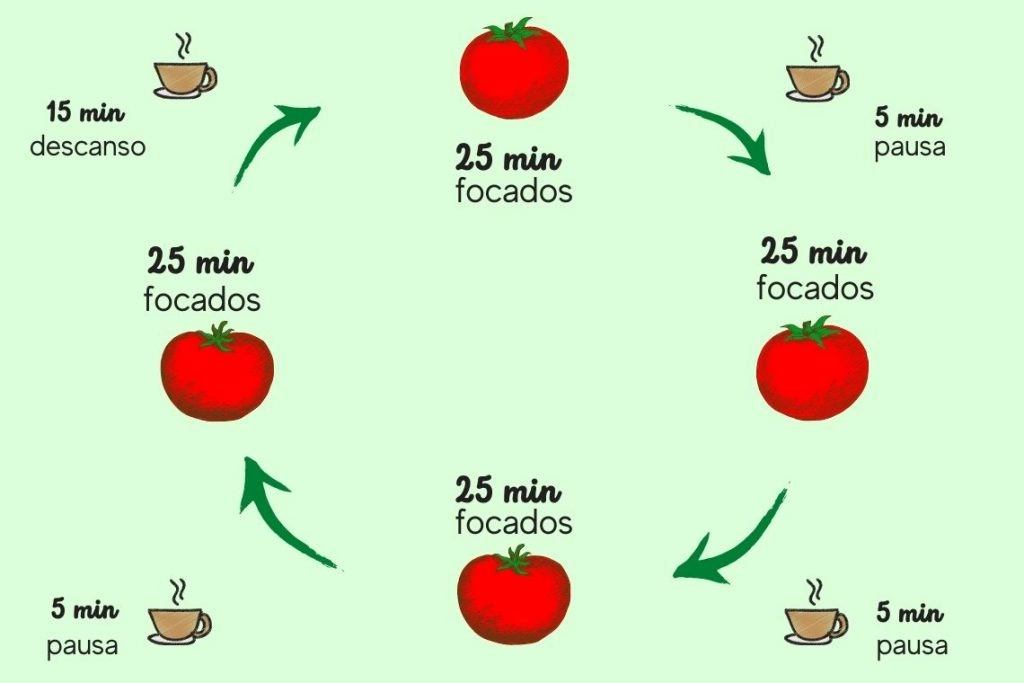
Sandra Caravana
Copywriter
Do freelancers need a biometric time clock?
The myth of the freelancer: it is a lifestyle in which the person who chooses to follow it has no hours for anything. Legend has it that so-called freelancers decide their own hours. It is the exponent of freedom. We can distinguish a freelancer from ordinary mortals in the bank queue: he is the one who is there at 11:43 in the morning and is not stressed. Or at the family doctor.
Is it really like that?

Sandra Caravana
Copywriter
Do freelancers need a biometric time clock?
The myth of the freelancer: it is a lifestyle in which the person who chooses to follow it has no hours for anything. Legend has it that so-called freelancers decide their own hours. It is the exponent of freedom. We can distinguish a freelancer from ordinary mortals in the bank queue: he is the one who is there at 11:43 in the morning and is not stressed. Or at the family doctor.
Is it really like that?
A freelancer is an autonomous, independent professional – but should not be confused with the accounting concept of self-employed. As a rule, a freelancer works on a project basis. A text, a song, a translation, a design… and gets paid for that work. These are mostly professions that do not require the professional to be routinely present at a specific site. Freelancers can be digital nomads, although there is not necessarily reciprocity.
So, is a freelancer totally free?
If a freelancer works on a project basis, why is time management so important?
With great power comes great responsibility – as Uncle Ben used to say.
Strawberry Nevill exposes time as a unit of energy.
Let’s take the example of a copywriter for social networks. The job is to write a 200-word post to announce the new menu of the restaurant The Fictitious Restaurant. The logical thing would be for this copywriter to monitor how much time he needs to write such a post and, from there, manage his schedule by work periods. Nevill proposes looking at schedule management as units of energy. This notion of energy is associated with the concept of concentration.
We do not have the same level of concentration, or attention span, throughout our lives. It has been estimated that 2-year-olds tend to concentrate 4 to 10 minutes on an activity; 7-year-olds about 14 to 35 minutes, and 10-year-olds for 20 to 50 minutes. These studies must be presented with relative precision, as there are many influential aspects regarding our attention span other than age. To see the work per unit of energy, we must realize what our attention span is, but it will not be a primary factor.
Time passes faster when we do something we enjoy, as the other said.

Source: Pixabay
Let’s take the example of a designer whose project is to create a logo for the restaurant The Fictitious Restaurant. How much time does a designer spend designing a logo? It takes time to meet with the client, it takes time to meet with the marketing agency (if a rebranding is done right), it takes time – and oh what a time – to stare at the blank canvas not knowing what to do. It takes time to go through all the drafts, and when the designer thinks his/her task is over, it takes time to make 73 small changes that the client has requested. In the middle of all this time, there is one time that the designer hasn’t felt passing: the time for his/her favorite task. This is why Nevill talks about understanding the different types of energy. We may feel exhausted even before we see the work finished.
So we revolutionize the calendar. Freelancer who is freelance without nomadism, has already safeguarded a wall in his office to create his own calendar with post-it’s. We draw a calendar on the wall and each post-it is a task. Note: a TASK, not a WORK. So we visualize the units of time (the ones we don’t control – an hour will always have 60 minutes), the units of energy, and the tasks to be done.
Knowing how to break a job into tasks is the same exercise as creating goals. I want to have more followers on my Instagram account is different from I want to have 3000 followers on my Instagram account by the end of next month. The second is a real goal – measurable. Save time for all the tasks your job requires: know how long, on average, it takes each task to be completed and include in that time units of energy used.
How many energy units do you use per day?
Energy units are the blocks of time, with limited battery power, where we are most productive.
Robin Sharma, for example, set all alarm clocks to 5am.

The 5AM Club, Robin Sharma
Are you a morning person? It costs us nothing to try. Waking up at 5am to meditate in the silence, reading with the sunrise, dancing with the first sounds… Waking up earlier provides quality moments for your thoughts before the day officially begins. Sound good? Don’t forget that you’ll have to go to bed much earlier too. Can you turn this into a post-it note? Will it be a chore or a pleasure? Is it a privilege of being a freelancer?
If so, you should also enjoy reading this one.
Let’s get to more practical aspects of organizing a freelancer’s time. More practical and more digital.
Time and Task Management Tools for Freelancers
1. Trello
Trello is a tool for organizing projects and tasks, which can be edited by multiple people. The site (also available as a mobile app) works in a list format, composed of charts, which you can create and edit as you like, as well as make comments, add checklists, files, images, text… whatever is needed for your work.
2. Toggl
Toggl acts as a kind of timer for your tasks. You can create a list of daily tasks and you can time how much time you use for each activity. At the end of each project, you can see a graph of the hours dedicated to each job. Available for browser and mobile app.
3. Notion
Notion is a workspace-style application, but so customizable that we can put it in the line of “all-in-ones” – tools that concentrate all the functionality of competitors within a single system. Notion works on all platforms, including Android, iOS, Mac, Windows, and the web. Widely used by designers for the blank slate possibility.
4. Evernote
Remember business cards? We all kept them in case we ever needed a plumber or real estate agent. Evernote started as the ideal app to digitally save those cards and evolved into the app that keeps all the notes, messages, notes, pictures, inspirations and quotes you want to keep. A journalist-friendly app.
Applications aside, we can manage time and energy using the Pomodoro technique, very popular among students. It consists of creating blocks of working time, alternated by pause blocks, of a shorter time. For example:

Source: NaPrática.org
In working time, we eliminate any kind of distractions. In break time, we move away from the workplace. This work time can be the length of your power unit, using the appropriate amount of blocks for your productive time.
“Work while they sleep,
study while they have fun,
persist while they rest,
and then live what they dream.”
Japanese proverb
Just ask Timothy Ferris.
The 4-Hour Work a Week is the bible for anyone who wants to escape the traditional 9-to-5 (which is never 5; it’s 6 or 7 or 8). Is it possible to work only 4 hours a week? Yes, more or less. The keyword here is productivity. Tim was not well; he was rich, but not well. He wanted more time. He decides to create his own change through four steps:
- Definition: introduce the rules and goals of the game.
- Elimination: annihilate the absolute notion of time management. This is where the strategy to work 4 hours a day begins (when, in Portugal, the 4-day week is still being discussed).
- Automation: outsourcing and non-decision rules. If we can’t control it, we should accept that it hurts less.
- Liberation: remote work, mini-retirements and mobility.
Does Tim get on the list of self-help authors? No, yes, maybe… Let’s see:
- Doing an unimportant thing well does not make it important.
- The fact that it requires a lot of time does not make a task important.
Freelancers’ time management is based on optimizing tasks (not projects) with the goal of greater productivity. Tim marries the Pareto Principle with Parkinson’s Law:
Pareto Principle
The 80/20 principle, widely used in business. 80% of outputs result from 20% of inputs. Or, 80% of outputs derive from 20% of effort and time. 80% of a company’s profits come from 20% of products and customers.
Parkinson’s Law
Dictates that a task will increase in importance and complexity in relation to the time agreed to its completion. It is the magic of the impending deadline. The pressure of the deadline forces you to focus and complete the task. And because the deadline is so close, you focus on the most important and crucial aspects of the project (who has never left the completion of a job to the deadline?)

Source: Renato Nascimento via Linkedin
Tim Ferris challenges us with the exercise of bringing two seemingly inverse approaches together:
- Limiting tasks to the important and shortening work time
- Shorten working time to limit tasks to the important
If you’ve been asked to translate a text and the required delivery date is long, such tasks will weigh down your calendar, whether it’s on a wall or in an app, and the translation won’t be complete until the deadline for delivery. Because as long as the project is open, you will always be editing something, no matter how insignificant. You will use more energy units on tasks of little significance.
Note: the first edition of The 4-Hour Workweek dates back to 2007. Therefore, all the strategies and synergies discussed were not influenced by the 2020 pandemic. I advise you to always read the most recent edition, to find the most up-to-date tips.
“Time asked time
how much time time has.
Time answered time
that time has as much time
as much time as time has.”
When we work as freelancers, time is flexible. We can work more or less hours, but the time is ours. It is within our control, it is within our post-it’s, it is within our little energy boxes.
To be a freelancer is to try to be productive and responsible. We create our own price list (explore this further here) and we choose our clients and projects.
Being a freelancer is also about being visible and looking for work. And looking for work is a very big post-it in a very strong pink. One word is enough: networking.
Being a freelancer requires an ability to establish clear boundaries between personal and professional life. Another post-it? Yes, if you so choose.

Source: Pexels
The keywords of a freelancer are productivity and energy. More than time, because that is a matter of timing.
Back to the initial question of the text: do freelancers need a biometric time clock?
Yes, for self-monitoring and evaluation.
